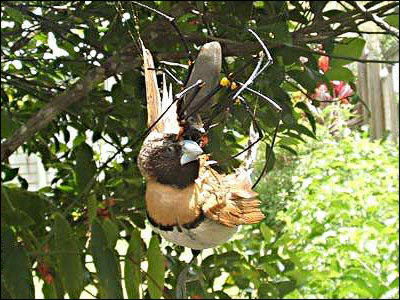Scientists answer the question, 'Which is stronger, the scorpion or the poisonous spider?'

Scorpions and spiders are arthropods that have existed for hundreds of millions of years before the dinosaur era. The question, 'When a scorpion and a poisonous spider fight, who will win the fight?' Has been discussed many times on YouTube and online forums, and is also the subject of research treatises. Samantha Nixon, a researcher at the
Ever wondered who'd win in a fight between a scorpion and tarantula? A venom scientist explains
https://theconversation.com/ever-wondered-whod-win-in-a-fight-between-a-scorpion-and-tarantula-a-venom-scientist-explains-155138
There are about 2500 species of scorpions and more than 900 species of poisonous spiders, even if they are called scorpions and poisonous spiders. Therefore, Mr. Nixon says that it is necessary to pay attention to three things, 'size', 'speed' and 'poison'.
It should be noted that, generally speaking a poison spider ' tarantula but imagine', the reality of tarantula in words that are collectively referred to giant spiders, mainly tarantula shows a group of.
◆ Size and weapons
The basic tactic of 'waiting for prey' is the same for both scorpions and spiders. However, scorpions wear a hard exoskeleton with overlapping proteins called chitin. In addition, the scorpion has two large scissors that allow you to grab a tarantula. For example, the world's largest scorpion, Heterometrus swammerdami, is known to grow up to 22 cm in length, and its giant scissors can also crush spiders. However, spiders can separate their legs to escape and regenerate their legs while continuing to molt, so it won't be fatal, Nixon said.

by Nireekshit
Of course, poisonous spiders are not defeated by scorpions in terms of size.
◆ Speed
According to a 2017 paper , one species of deathstalker can swing its tail at about 1.3 m / s to protect itself. Also, according to a 2015 study , the Texas Brown Tarantula can move at a speed of about 1.2 m / s, although it fluctuates depending on the temperature. Both scorpions and tarantulas are comparable in agility.

by Mothore
◆ Poison
Scorpions inject poison from the tail needle and spiders inject poison from the fangs. Both scorpion venom and spider venom are venoms that primarily target the nervous system. In addition, both are characterized by their high immediate effect and toxicity due to the complexity of the poisonous components over the evolution of hundreds of millions of years. Poison is used not only to catch prey, but also to protect yourself from threatening rats and birds.
Scorpions are more threatening to humans than spiders,
As a general rule of thumb, the smaller the scorpion scissors, the stronger the poison. For example, the deathstalker that lives in Europe from the Middle East has very thin scissors, but its poison is very powerful. If stabbed, it causes myocardial damage, pulmonary edema, and cardiogenic shock , and is said to be life-threatening.

by
On the other hand, spider venom is said to be dangerous to humans, but there are few records that it was actually bitten by a spider and died. For example, the Indian ornamental tarantula that lives in India has a relatively strong poison, but when bitten, it causes severe pain for several weeks, causing muscle spasms, but it is not fatal. However, it is considered one of the spiders to watch out for because it moves very quickly and aggressively.
However, the larger the enemy's size, the greater the strength and amount of poison required. Therefore, the largest scorpions and spiders are about the same size, but the poison is clearly stronger in the scorpions, so the scorpions are a little more advantageous. There is a record that the scorpion Isometroides vescus, which actually lives in Western Australia, hunts some spiders.
However, as the size of spiders increases, it has been reported that spiders become predators of scorpions. According to some studies, when a spider called Tliltocatl vagans and a scorpion called Centruroides species living in the Yucatan Peninsula were bred together in the laboratory, Tliltocatl vagans always won. Also, in the area where Tliltocatl vagans inhabits, the number of scorpions is very small.

by Bernard DUPONT
It has also been reported that some scorpion venoms were effective against insects and mammals, while some spiders were completely ineffective, and spiders evolved to protect themselves from scorpion venom. It is suggested that it may have been done. The principle of why scorpion venom does not work on spiders is unclear, but it is thought that spider lymph contains a component that detoxifies scorpion venom.
'Overall, the answer to whether a spider or a scorpion is better, given size, speed and toxicity, will change, but I'm betting on the spider's victory,' Nixon said.
Related Posts:
in Creature, Posted by log1i_yk







